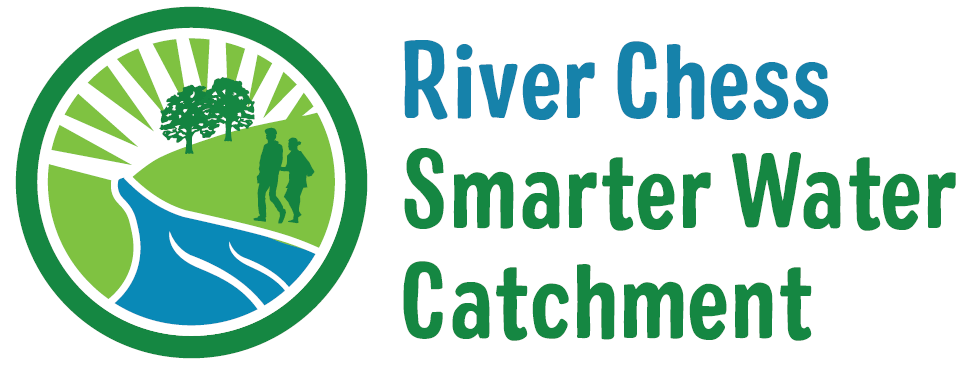
Water quality sensors
We have six water quality sondes carrying numerous sensors in locations throughout the River Chess.

These record data for temperature, turbidity, electrical conductivity, dissolved oxygen and more.



Sondes need constant care to make sure they don’t get covered in algae, sediment, leaves or get repurposed as crayfish homes!
What have our water quality sondes been showing us?
Snowmelt: December 2022

The wintery weather that occured in December 2022 and subsequent warming caused a rebound in water temperature from 1 to 9 °C (see above graph), which we discovered by looking at data recorded by our water sensors deployed in the lower River Chess.
Specific (Sp) conductivity is a measure of the total dissolved solutes in the river; the peaks on 18th and 19th December probably reflected washing in of gritting salts from roads to the river, which you can see coincides with the rising temperatures on the graph.
It’s worth mentioning that these levels of Sp conductivity are not at all problematic levels, but are a reminder that what we put on our roads does end up in our rivers.
Chesham storm tank overflows: March 2023

Chesham sewage treatment works experienced an overflow event from their storm tanks on the evening of 31st March 2023 into the early hours of 1st April, which was recorded on the Thames Water storm discharge map (click here to view).
Our sonde just downstream of the sewage treatment works recorded a sharp drop in dissolved oxygen to 35% only 45 minutes after the overflow event started, with troughs in specific conductance (a measure of the total dissolved solutes in the river) and pH, and a spike in ammonium all occuring 5 1/2 hours after the start of the overflow event.
Signal Crayfish burrowing: May 2023

Signal crayfish are present in almost all our Chilterns Chalk Streams, although generally are more abundant in the lower reaches.
As a result of deployment of our lower Chess water quality sondes in 2022, we think we have begun detecting daily patterns of nocturnal activity from Signal Crayfish through heightened turbidity levels (see graph above).
Scorching summer temperatures: June 2023

Chalk aquifers are known to hold cool groundwater temperatures of around 10°C, yet it isn’t surprising that our water quality sondes have been picking up the effects of our recent heatwaves at both ends of the catchment.
As you can see in the graph above, water temperatures in the River Chess above Chesham sewage treatment works (STW) reached highs of 16.7°C on Sunday 25th June at 17:45, whereas temperatures in the lowest stretch of the river before it confluences with the Gade/Colne reached a whopping 21.2°C by 19:00 on the same day.
High water temperatures of over 20°C for prolonged periods cause difficult living conditions for chalk stream ecology, especially for salmonids such as trout and grayling.
We want the data we have collected to be accessible to rivers groups, students, researchers, policy makers or even just interested individuals, so we created an online Water Quality Data Dashboard as part of our River Chess Storymap.
This dashboard allows you to see a timeline of our downloaded data from all of our sondes that we manually add to the site, as well as live data from two sondes in the upper Chess, either side of Chesham sewage treatment works.

Access our Water Quality Data Dashboard through our River Chess Storymap:

Citizen scientists at work
Our River Chess storymap links to our water quality data dashboard, which was created by one of our very talented citizen scientists, Hefin Rhys.
Hefin continues to assist us in adding data to the dashboard, as well as fine tuning various improvements, using his skills as a data analyst in his career.


